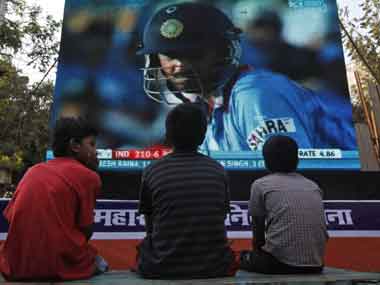How often do you get irritated with a commercial break interrupting the film you’re watching just at the moment it got exciting? How irritated do you get when the frame of the program you’re watching shrinks as it gets ‘surrounded’ by a frame that sends out a commercial message? Hey, why is there another ad break? Didn’t we just see one? Why are the commercials so LOUD that you jump for the remote control as the ad break begins, and raise the volume as the TV program begins? Thanks to the ads, a 2 hour movie becomes a 3 hour viewer experience — is that fair? You’ve asked yourself all these questions, helplessly and in despair. Hang on, help is on its way. The Telecom Regulatory Authority of India (TRAI) is on your side. [caption id=“attachment_251359” align=“alignleft” width=“380” caption=“Now, TV watching will be a more pleasurable experience thanks to TRAI. Danish Siddiqui/Reuters”]  [/caption] In a consultation paper entitled “ Issues related to advertisements on TV channels”, the TRAI has proposed the following stipulations: 1. The limits for the duration of the advertisements shall be regulated on a clock hour basis i.e. the prescribed limits shall be enforced on clock hour basis. 2. No FTA channel shall carry advertisements exceeding 12 minutes in a clock hour. For pay channels, this limit shall be 6 minutes. 3. The 12 minutes of advertisements will not be in more than 4 sessions in one hour. In other words, there will be continuous airing of the TV show for at least 12 minutes each. Not more than three advertisement breaks shall be allowed during telecast of a movie with the minimum gap of 30 minutes between consecutive advertisement breaks. 4. In case of sporting events being telecast live, the advertisements shall only be carried during the interruptions in the sporting action e.g. half time in football or hockey match, lunch/drinks break in cricket matches, game/set change in case of tennis etc. 5. There shall only be full screen advertisements. Part screen advertisements will not be permitted. Drop down advertisements will also not be permitted. 6. In so far as News and Current Affairs channels are concerned, they are allowed to run not more than two scrolls at the bottom of the screen and occupying not more than 10% of the screen space for carrying non-commercial scrolls, tickers etc. 7. The audio level of the advertisements shall not be higher than the audio level of the programme. These seven proposed stipulations cover most of the common complaints that viewers have with channels. It’s important to note that these are only proposals as of now; it is only after deliberations that the TRAI will take final calls.
How often do you get irritated with a commercial break interrupting the film you’re watching just at the moment it got exciting? You’ve asked yourself this question, helplessly and in despair. But now, the TRAI is there to help.
Anant Rangaswami was, until recently, the editor of Campaign India magazine, of which Anant was also the founding editor. Campaign India is now arguably India's most respected publication in the advertising and media space. Anant has over 20 years experience in media and advertising. He began in Madras, for STAR TV, moving on as Regional Manager, South for Sony’s SET and finally as Chief Manager at BCCL’s Times Television and Times FM. He then moved to advertising, rising to the post of Associate Vice President at TBWA India. Anant then made the leap into journalism, taking over as editor of what is now Campaign India's competitive publication, Impact. Anant teaches regularly and is a prolific blogger and author of Watching from the sidelines. see more


)

)
)
)
)
)
)
)
)



